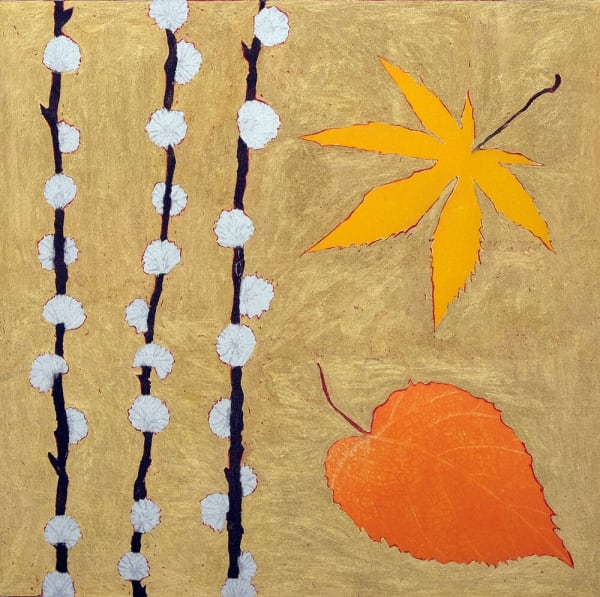Artist Jean Bardon: 'The falling leaves give a sense of floating or lightness and gentle movement'
Everything in the printmaker's work 'circles the garden, the seasons, and nature'
It began with the pencils.
And some “small scraps of paper, small notebooks, the backs of envelopes – never anything larger.” Jean Bardon loved to draw, and can still remember the excitement of her first set of felt-tip pens. “The smell of them – highly toxic, I’m sure. The strength of the colours and the marks they made, compared to the coloured pencils I was used to.”
At secondary school, Bardon took art as an exam subject and went on to study at Dún Laoghaire School of Art [now IADT] in the early 1970s.
"In foundation year I was heavily influenced by Bauhaus thinking. I focused on the visual field through the elements of line, colour, texture and form and it led me towards graphic design and graphic art."
Access to weaving, pottery, metalwork, and wood and stone carving, helped to break down traditional barriers between art and craft but "interestingly, in light of what I ended up doing, there were no real printmaking facilities in the college. Just rudimentary lino and monoprints, plus some screen printing that focused on textile printing than fine-art print."
After college, Bardon moved to Amsterdam and worked in a design studio.
"Living in a cosmopolitan design-conscious European city with a rich cultural life and a palpable sense of creative energy was pivotal," she says.
She took night classes in etching on a houseboat on the Amstel, and that was her eureka moment.
"I was instantly attracted to the etching needle on copper and zinc plates - etching them in acid, creating a plate from which an image could be printed, using a printing press almost identical to the one I'd seen in Rembrandt's house."
Bardon had found her medium. Today, she is a member of Graphic Studio Dublin,
Everything in Bardon's work "circles the garden, the seasons, nature and pattern", though she is not season-led. "I might be etching irises in January that I drew in the garden in May."
Leaves, hydrangeas, peonies, birds are familiar Bardon motifs. Her last solo show focused on autumnal images.
Understandably frustrated that the print is sometimes seen as an inferior artwork, Bardon explains how the artist's hand is involved in every stage in its development.
"When your plate is finished, it has to be inked-up by hand, and then rolled through a printing press each time it's printed. In my case, I sometimes have 14 colours on a single plate, each individually applied."
This elegant etching, 'Floating World', was inspired by Bardon's trip to Japan in autumn 2018.
In a Japanese context, the floating world refers to the urban lifestyle and culture, especially the pleasure-seeking aspects, of Edo-period Japan. "Ukiyo-e, literally 'pictures of the floating world', is the name given to prints and paintings depicting this world."
The carefully arranged willow catkins, the maple leaf and the autumn leaf from a cherry blossom tree were drawn using "a technique unchanged since medieval times".
The initial drawing on a mixture of beeswax and resin melted and rolled onto a heated copper plate was then immersed in nitric acid, powdered resin was applied, then ferric acid fixes the tones.
"The falling leaves give a sense of floating or lightness and gentle movement," says Bardon. "Rhythm and repetition of colour add a mind-calming element."
And 22 carat gold leaf - the final element - turns this silent image golden.
Spring Group Show, Solomon Fine Art, until April 29
Instagram @jeanbardonprintmaker




